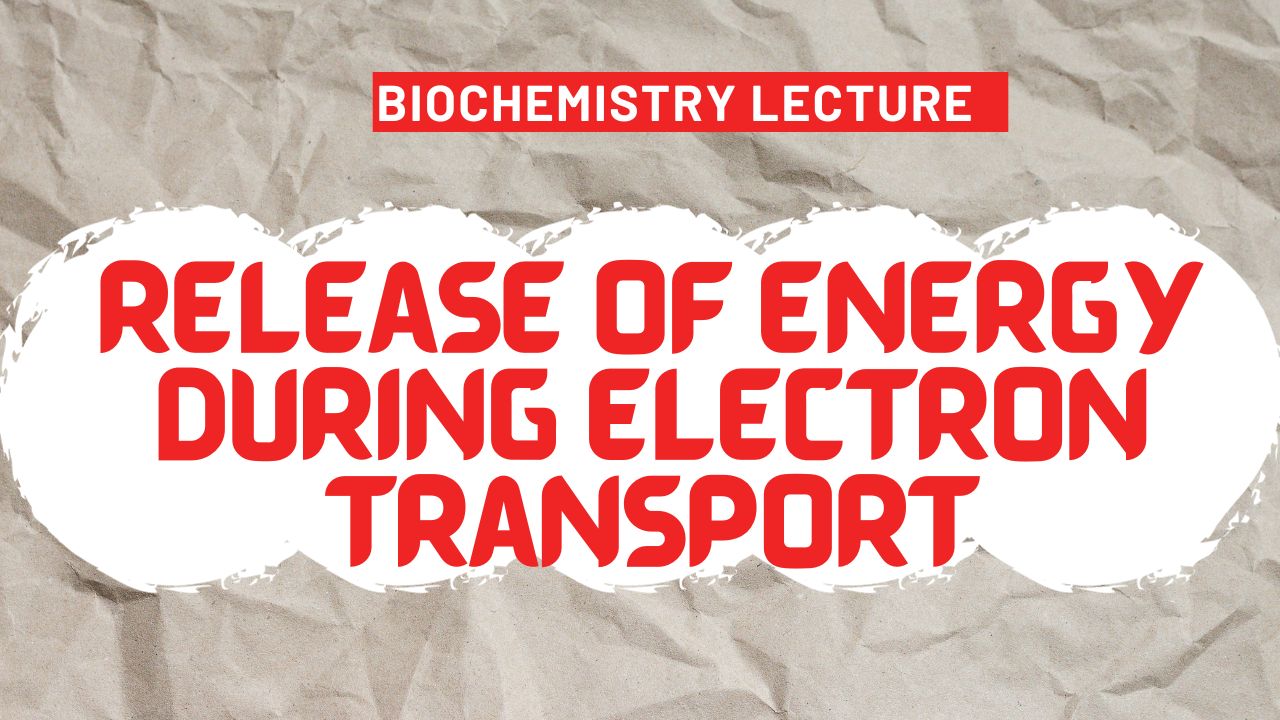In a biochemistry lecture, the release of energy during electron transport is a fundamental concept discussed in the context of cellular respiration, particularly the electron transport chain (ETC). Let’s break down the key points regarding the release of energy during this process:
1. Overview of Cellular Respiration:
- Cellular respiration is the process by which cells extract energy from nutrients (such as glucose) and convert it into a form usable for cellular functions, primarily in the form of ATP (adenosine triphosphate).
2. Electron Transport Chain (ETC):
- The ETC is a series of protein complexes and electron carriers located in the inner mitochondrial membrane in eukaryotic cells. It facilitates the transfer of electrons through a series of redox reactions.
3. Flow of Electrons:
- During cellular respiration, electrons are transferred from electron donors, such as NADH (from glycolysis and the citric acid cycle), through the ETC.
- Electrons flow through protein complexes (Complex I, II, III, IV) and carriers (ubiquinone, cytochrome c) in a series of oxidation-reduction reactions.
4. Proton Pumping:
- As electrons move through the ETC, certain protein complexes actively pump protons (H⁺ ions) across the inner mitochondrial membrane from the mitochondrial matrix to the intermembrane space.
- Proton pumping creates a proton gradient, with a higher concentration of protons in the intermembrane space.
5. Proton Gradient and Potential Energy:
- The proton gradient represents potential energy stored in the form of an electrochemical gradient.
- The potential energy is a result of protons being moved against their concentration gradient, creating an imbalance.
6. Chemiosmosis:
- The proton gradient drives chemiosmosis, a process where protons flow back into the mitochondrial matrix through ATP synthase, a protein complex embedded in the inner mitochondrial membrane.
- ATP synthase uses the energy released during proton flow to synthesize ATP from adenosine diphosphate (ADP) and inorganic phosphate (Pi).
7. Release of Energy:
- The release of energy occurs when electrons move through the ETC and protons are pumped across the inner mitochondrial membrane.
- The energy is stored in the form of a proton gradient and is released during chemiosmosis when protons flow back into the matrix through ATP synthase.
8. ATP Synthesis:
- The released energy is harnessed to phosphorylate ADP, producing ATP.
- ATP is the primary energy currency of the cell and is used to power various cellular activities.
9. Final Electron Acceptor:
- The final electron acceptor in the ETC is oxygen, which is reduced to water. This step is crucial for completing the electron transfer and preventing electron buildup.
Understanding the release of energy during electron transport and ATP synthesis is essential for grasping the energy-generating mechanisms in cellular respiration. This process is a central aspect of biochemistry, providing cells with the necessary energy for their survival and functions.
